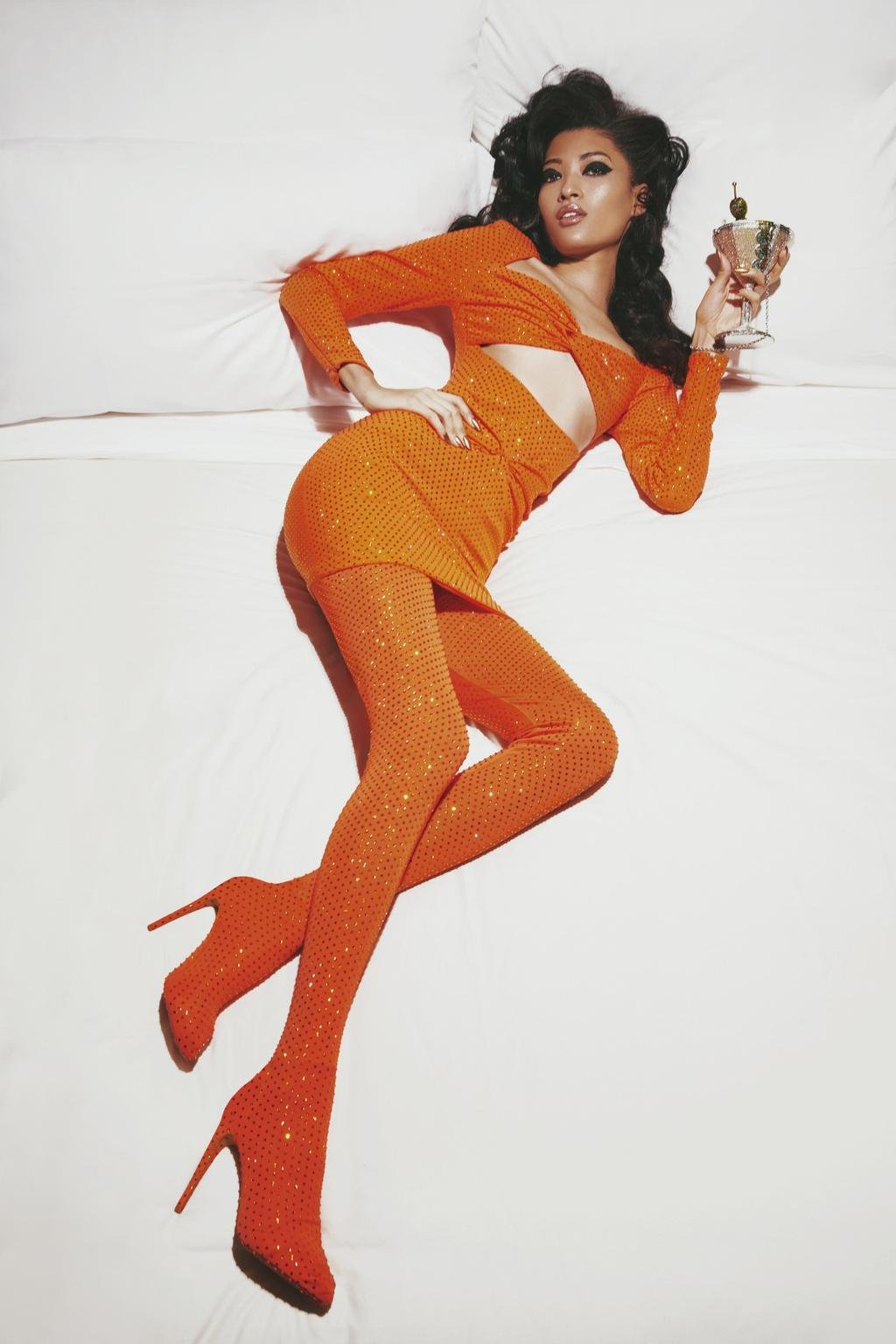The Case for Statement Tights
By Madeleine Kaptein
Photography by Iman Behbehani
Nylon tights are evidently practical for two types of people: superheroes and women. Nylon material was invented in the 1930s– the tights were originally worn by circus strongmen and acrobats, then by superheroes (specifically Superman). According to Vogue’s history, fashion-oriented nylon stockings were sold for the first time in the spring of 1940, and quickly became popular– within their first year on the shelves, department stores in the UK sold over 64 million pairs.
During World War II, the production of nylon tights was temporarily halted to redirect the material towards the war effort, as it was cheap and durable– perfect for parachutes, ropes, and airplane materials. While the actual material was sacrificed, women were too attached to the accessory and resorted to painting dark seams on the backs of their legs for social conformity and confidence purposes. This was even a service they could pay for from stores!
Smithsonian Magazine details the process these women invented, involving covering their legs with a layer of nude makeup, and proceeding to use black eyeliner to outline the seam. The museum has a bottle of this “Leg Silque Liquid Stockings.” Winter of 1946 brought back the genuine material tights and they went right back up in demand– after all, they never really left in spirit. Not even world wars can disrupt a forceful fashion trend.
Images from the Smithsonian
Back in this era, the style of these tights took on a classic, uniform look. Since then, women have expanded their horizons– they are now a clothing item with a wide variety. In the 1950s, fishnet tights were adored by famous actresses like Elizabeth Taylor and Audrey Hepburn, but later developed to become a staple of goth, punk, and then mainstream fashion. In the 1970s, psychedelic and abstract patterns on tights became popular– any standout colors or designs were praised. Then came ripped tights and fluorescent colors, but in the 1990s black and neutral colors returned to the main fashion. See here for a short history and timeline of tights throughout the decades.
Limiting tights to a simple background, a classic accessory, is a mistake. Growing up, I never considered tights to be much of a fashion tool. They were more of a burdensome necessity to protect my legs; they ripped easily and meant I couldn’t run free. I had to learn to put them on without tearing them apart. Their dullness and fragility are not exactly a thrill for children, nor for adults– the majority of tights are neutral and viewed as a mere accessory, a background item to clean up a look or to add a layer of extra warmth.
I think we need to evaluate our everyday perspective on tights– specifically bold tights are one of the best ways to express a personal style. Vogue’s review of the best bold tights looks of 2021 ranges from Christian Cownan’s neon orange monochrome look, Anna Sui’s deep magenta, and Collina Strada’s captivating floral pattern stockings. Considering women once worked so diligently to keep the accessory alive even when the material was physically unavailable, these women are properly taking advantage of its presence to make bold, unapologetic statements– something we tend not to associate with hosiery.
But when tights are bold, bright, richly colored, or patterned, they bring a seemingly unimportant accessory to the foreground. They demonstrate that careful thought has been put into an outfit, that the wearer knows the importance of distribution through layers of clothing, and has a careful eye for balance but also for fun and unconventional attire. Pairing plain main pieces, like solid-color dresses, skirts, or tops with alternating funky and eccentric accessories inexpensively and effectively builds a wardrobe with a definitive personal style.
Photography: Iman Behbehani
Model: Miracle Tapia

























